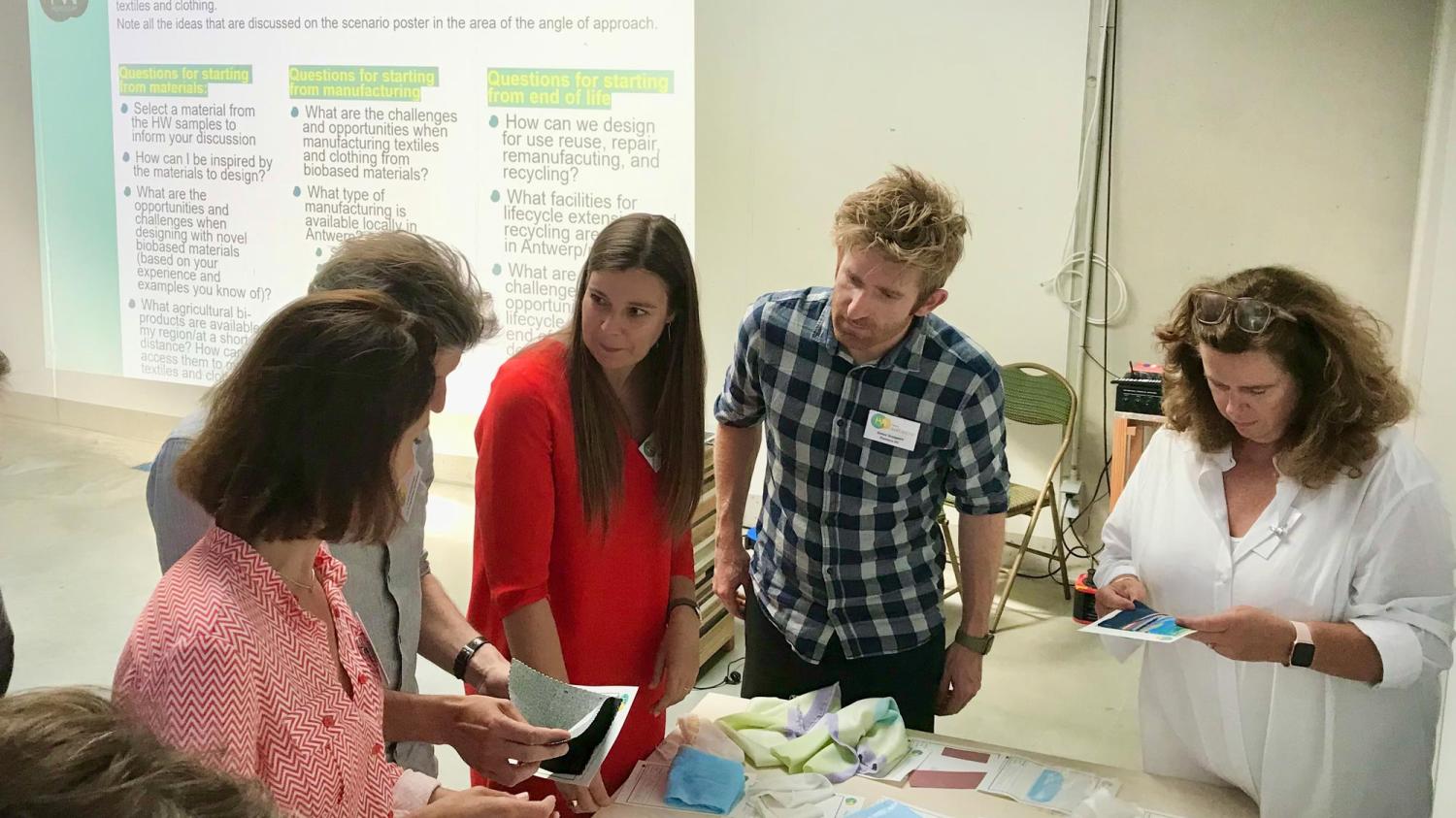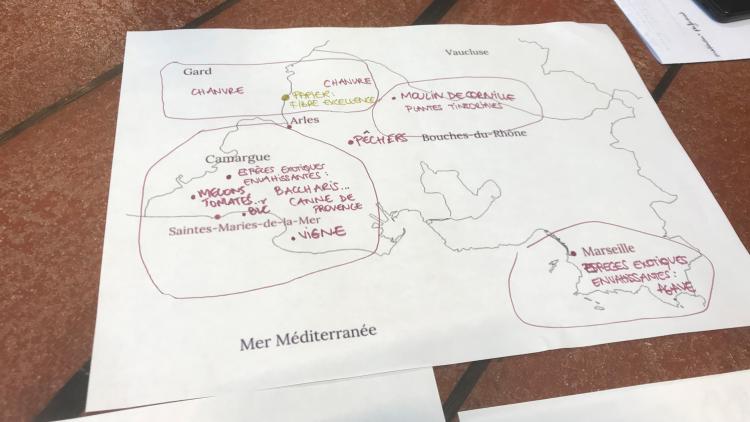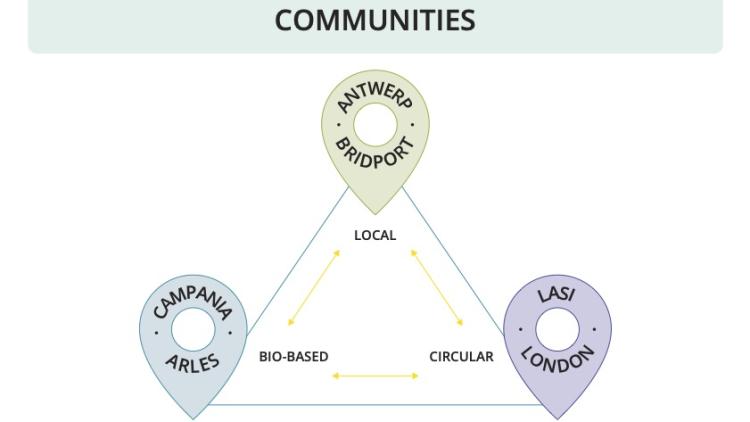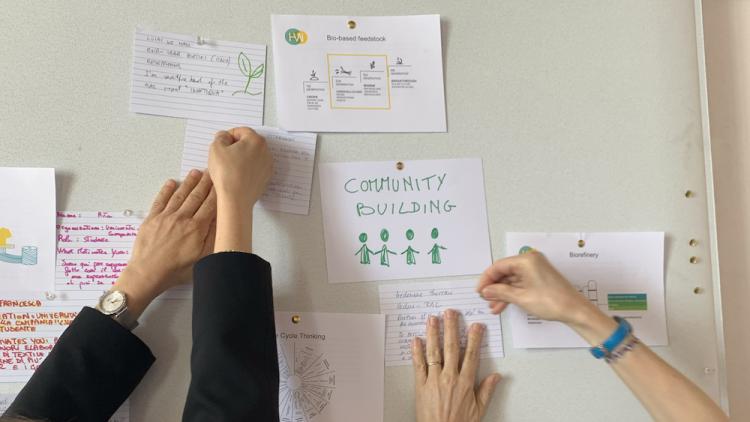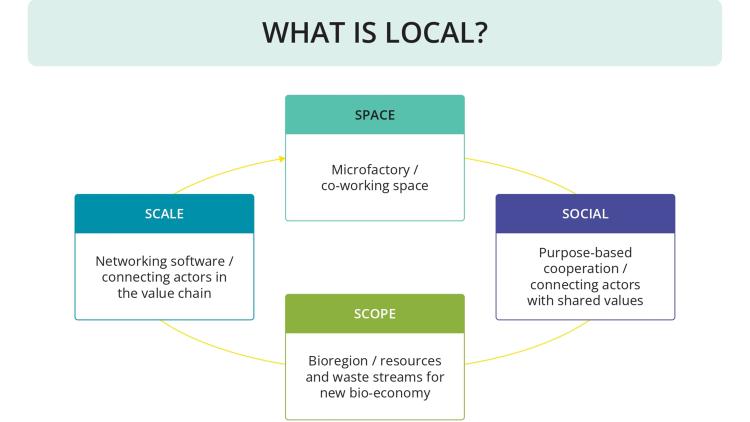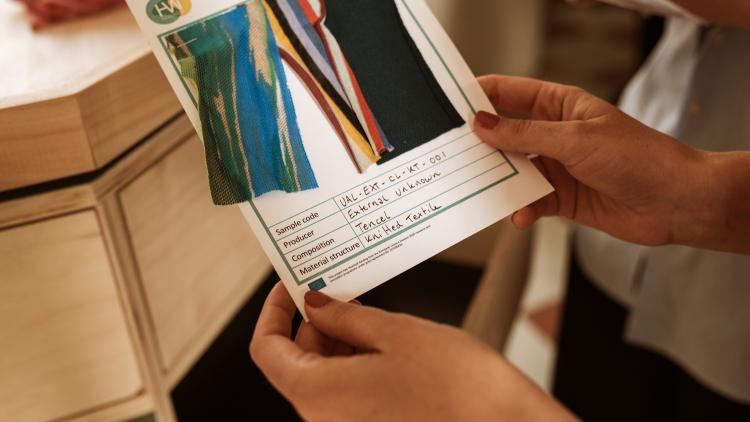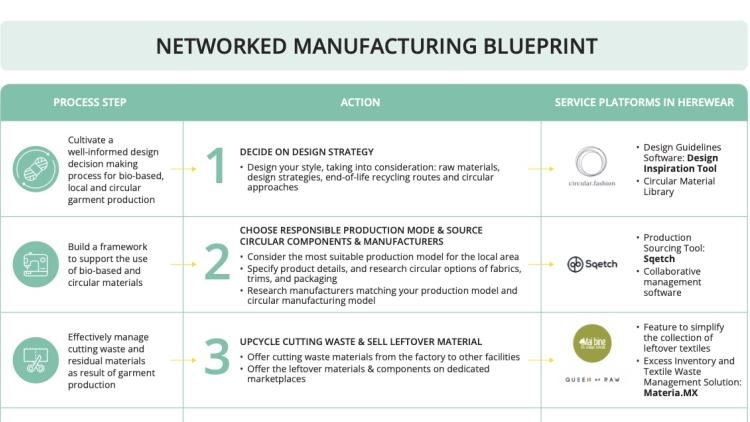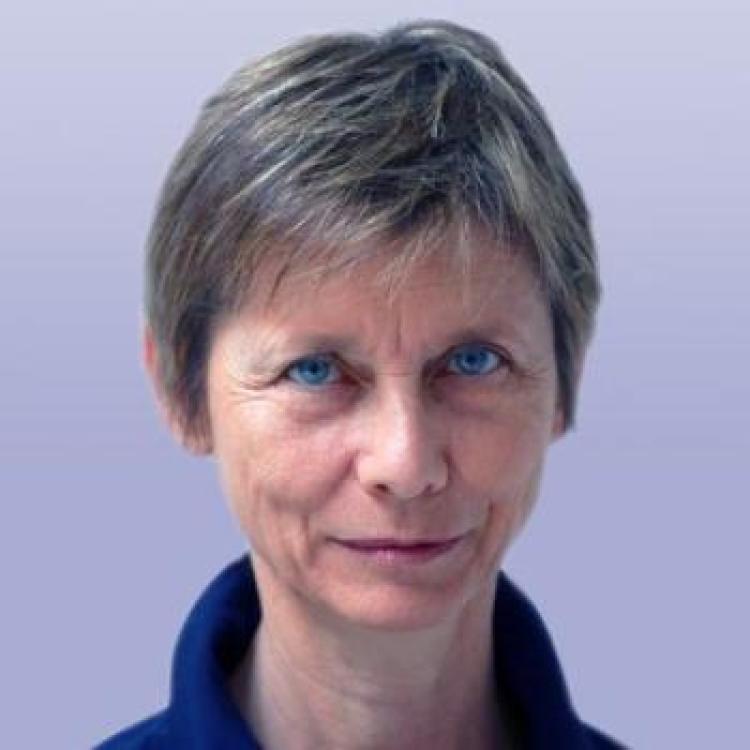Promoting community-led uptake and innovation
An important and innovative component of the HEREWEAR methodology has been the development of a community of individuals and businesses interested in participating actively in project developments.
The transformation of the textile and clothing industry towards a Bio-based, Local and Circular business ecosystem involves a broad-reaching innovation process that no single entity can carry out on its own. As innovative products and processes are adopted, knowledge needs to flow freely across disciplines and regions; as value chains are re-defined, so are roles of people and businesses remapped collectively; as new challenges arise, trust becomes an essential ingredient for lowering innovation risk. All of these dynamics lead to the need to shift the emphasis beyond the confines of the single company or organisation towards a collective community dimension.
The HEREWEAR Community
An important and innovative component of the HEREWEAR methodology has been the development of a community of individuals and businesses interested in participating actively in project developments and gaining early-stage access to information about new materials and processes as their research activities unfold. Over the project’s lifetime, over 200 participants from across Europe signed up to the Community platform and over 200 citizens, associations, businesses, and public authorities participated in 10 face-to-face workshops and events. You can download case studies of these community engagements on the 'Using creative tools with communities' page linked below.
The On-line Community
The community-building activity unfolded along the two parallel dimensions of on- and offline interaction. For the on-line community, a specific community platform allowed members to join the community by expressing their needs and interests and alignment with HEREWEAR objectives. Registered members gained access to reserved information grouped according to the main HEREWEAR themes: Bio-based technologies, Local communities, Circular Strategies and Materials and to varied communication on events, or a directory project experts to follow.
Most outputs are now available on the HEREWEAR hub of resources and following the project conclusion at the end of October 2024, this community space will be maintained by the TCBL Association as a natural extension of the methodology and approach shaping the Community Space.
Quadruple helix communities
In parallel with the development of the online community, particularly active participants together with HEREWEAR project partners have developed the community dimension within specific local contexts. This allows for a more fluid and direct interaction in concrete operational settings that address the specific issues and opportunities in each geographical, industrial, and cultural context.
In order to fully address the innovation potentials in each local community, the quadruple helix model has been adopted as a framework for bringing stakeholders together. This ensures that a broad range of perspectives are included, including those of public authorities, local businesses, research and innovation centres, and citizens and NGOs.
Emergent community interaction models
Throughout the community building and interaction activities in HEREWEAR, three distinct models for community interaction emerge. Each of these may involve a mixture of on- and offline interaction, but they differ in terms of the main objective bringing stakeholders together.
- Community of practice: This is a well-known model connecting participants from the same field of activity (e.g. designers, manufacturers, activists) wishing to share knowledge and insights. The relative homogeneity of actors allows them to focus on specific issues of concern from a common baseline.
- Community of production: This model unites stakeholders with a range of roles, generally situated along a manufacturing value chain, who wish to explore systemic innovations together. The presence of key players from different stages (e.g. spinning, weaving or knitting, finishing, sewing) allows them to gain knowledge from their varied perspectives, and experiment with alternative value chain production models.
- Community of purpose: This model brings together stakeholders sharing a common set of values. It often subsumes the above interaction models to address specific issues or carry out targeted experiments. More broadly, however, it ensures that all of these activities promote the transition towards sustainability as the main purpose driving their activity. It is also a model on its own, facilitating new thinking about economic models for the future in which purpose and business are fused into a shared vision.
Developing a 'seed community' through education
To develop the next generation of designers and entrepreneurs ready to benefit from the unique opportunity of bio-based, local and circular textiles ecosystems, we engaged with students through the HEREWEAR and TCBL educational partners, led by University of the Arts London, and with contributions from Fabricademy Barcelona, and IAAC. This enabled students to explore the HEREWEAR pillars through their textile, fashion and service design practices, meet community members and present their work to a wider audience. You can download the case study at the top of this page.

